And the internet? You will get an idea when you read this: “A key requirement for BBS Computer Bulletin Board cruising is patience. The good boards are usually the most difficult to conect to, specially in the evening when long-distance rates are lower. You may have to try repeatedly for 10 to 20 minutes before you get an open line.” Just imagine the modem dial-up device getting your home phone line busy everytime you try to connect to them through the incipient internet (like in “War Games” era, but with a baby-internet undergoing). I got my first PC with Windows 95 in the '95 spring, and I had my first internet connection in 1996. I still remember you paid for hours connected to the internet server. One month I paid 250€ just to my ISP for my hours of usage (now it would be like 500€). In Nov 1993 *nobody* had webpages, not even Meade (first to come online late 1994).
In order for you to know how things were back then…
These are years of virulent mail order low-price oriented stores in the USA (mostly from New York) that made a lot of harm to specialized houses and showrooms. In 1992 Meade launched their venerable LX200 telescope series and in 1994 their first LX200 16” hit the market! Subsequent years made Meade the “big guy” worldwide (before miserably going bunkrupt). It was first Meade and then the rest. These are the days of LUMICON’s “film hypersensitization kits”, and CCD camera concept is just a new-born baby in the amateur astronomy community. SBIG was advertising their ST-4 “star tracker” (192 x 164 pixels) in a small half-page B&W add, and their ST-6 costed $3000 on March 1994!! My heros at that time were Dr. Donald Parker, Jason Ware and Ron Dantowitz. You can see some of their images in the Meade 1996/97 catalog. At that time I didn't know about Meade-Celestron classic war in the mid-priced Cassegrain line.
INDEX:
1:The beginning
A short story
1: THE BEGINNING (1993/94)
It is November 1993 (I was hardly 18 years old) when I was called to look up to the sky. It was very simple. Just out of curiosity, I bought the November No.11 “Astronomy” magazine at a kiosk in Chichester, UK. Immediately I got in love with it all; open-mouthed, avidly reading all that information, I dreamt of being the owner of a telescope... any telescope. I still keep this ASTRONOMY No.11 with me, and the SKY&TELESCOPE 1994 March magazine I bought later on too. The ASTRONOMY No.11 magazine included a “Telescope Buyer’s guide” where you could gaze through the whole telescope market along with Pros and Cons of every inimaginable telescope design. Here you can see pages 3-4 (click on pics to make them bigger):
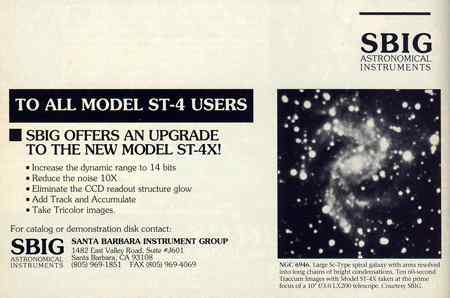
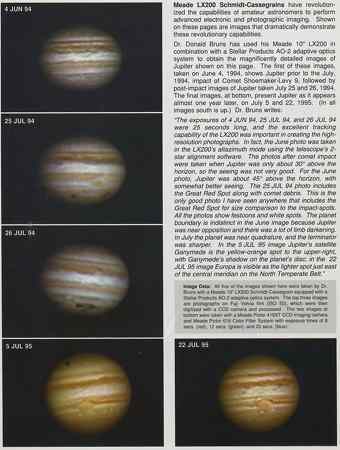
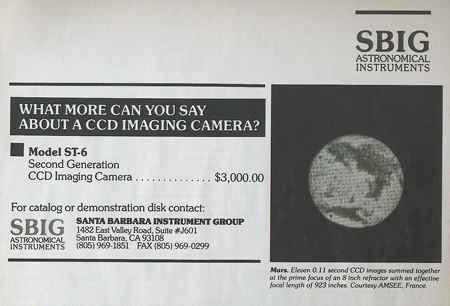
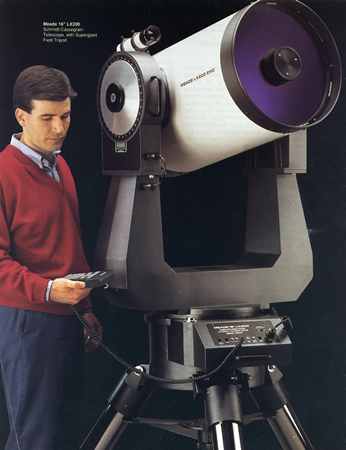
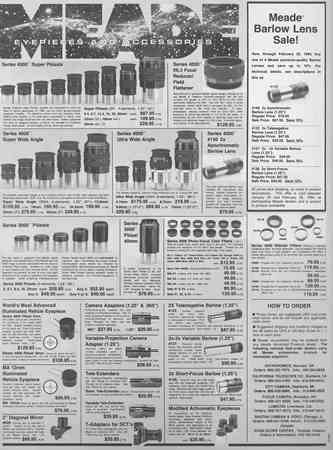
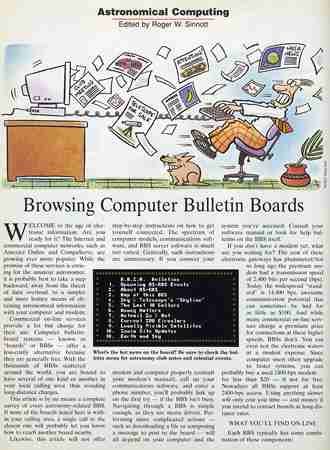
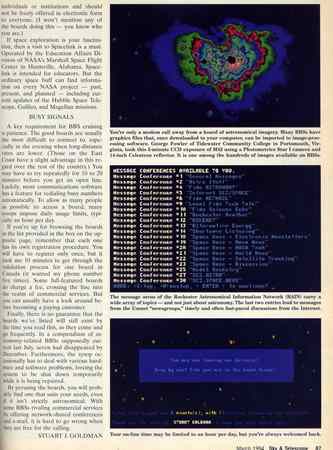
INDEX:
2:The mid-years
A short story
2: THE MID-YEARS (1994-2015)
After coming back from the UK, I arrived home at Madrid and I engaged in a couple of engineering degrees to no success. Then I looked for a job and spent 2 years selling TVs and PCs in a wallmart. After that experience, I decided to study to get a better job and be a government worker. This blessing from God, along with the fact of having moved in 2001 to live in a detached house (not a flat apartment) gave me enough economic stability and the proper enviroment to begin to shape the observatory.
As we didn’t have much free space outside of the building (and the building itself was going to block large portions of the sky), I decided to put the observatory ON the roof. For that matter, I didn’t want to use a dome, as the costs and work involved in modifying roof structure raised significantly. At first, I decided to put scope inside a big metal box that would be opened through hinges placed on the top of roof. You can see this penaut-head idea in sketch on left. The metal box was used to store firewood for some years. It is summer 2007, and God GIFTED me with a "new room" and this allowed to use part of my "old room" to build the observatory through someone that understood well what I needed. My brother Walter (from Ecuador) built my new room and observatory around the idea of this industrial smoke escape window.
This is summer 2007 when my "new room" and observatory (placed on "old room") began to be built.
INDEX:
3:The end of it
A short story
3: THE END OF IT
In June 2015, a change in my job situation allows me to spend more time at home! Now I have time to further delve into the magic of Zion. At last I can begin to make my picture-making routine.
In Sept. 2015 I decided to further refine my secundary optical trains, make multiple testing, take hard decisions, etc. Right now my hardware list in the observatory is this:
-Main scope:
Meade LX200 ACF 10" with USB3.0 camera behind 7-position USB 2.0 Starlight Xpress filter wheel, (Astronomik 2c LRGB + Astronomik IR PRo 807 + Baader 685IR longpass), Madrid Sky APO Barlow Beta model, VSI 3" Toadloader focuser and Kendrick anti-dew system. Self-made remote collimation system installed on front of scope (to be able to collimate from within home without freezing my a** out).
-Secondary lenses:
1) Pentax H20ZME-2 F1.6 with a 2x Pentax duplicator (24-480mm focal length across all zoom range, aprox F3.2-F5.6) with a DMK 21AU618.AS mono USB 2.0 camera (ICX618 sensor). Weights aprox. 3200gr with dew heater and metal lens hood. I got the idea to mount it BELOW the tube from an amateur called Lorence (thread HERE). This allowed me to save a lot of counterweight!
2) B12ZCME 15-180mm F1.9 Pentax Cosmicar zoom lens with a Basler 2400 color ethernet camera and dew heater. This lens does produces no vignetting with a big sensor such as Sony ICX625 and it has a huge zoom range and quality all around. Weights aprox. 1750gr with dew heater and thermal dissipators to keep camera as cool as possible.
3) Ernitec M12Z6-MK2 (REV S.5) 12,5-75mm F1.2. Fast and super-sharp lens with a Basler acA640-100gm monochrome ethernet PoE camera (ICX618 sensor). Dedicated to monochrome meteor work or similar. Aprox weight: 1150gr.
4) Ernitec Q6Z6SA 6-36mm F0.95 with a Basler acA1300-30gc color ethernet PoE camera (ICX445 sensor). Dedicated to color meteor work. Aprox weight: 900gr.
5) Fujinon FE185C086HA-1 2.7mm F1.8 all-sky fish lens with Basler 2400 color ethernet camera. Aprox weight: 600gr.
-Computer:
PC with Windows 7 Pro 64 bits, Intel Asrock X99 Extreme 6/3.1 mainboard with Intel E5-2683 v3 2.0 Ghz and 128Gb RAM, RAID with 3x high performance Western Digital SAS disks 3Gb and Intel RS2BL040 SAS RAID controller, SSD Samsung 256Gb 840 Pro running OS, Samsung 8500 4K 48" TV as main monitor, Benq 24" G2420HD, Eizo 19" S1921 and LG 32" 1920x1080 TV as secundary monitors, running under Nvidia Quadro K4200. As power back up, I have a Ellipse 1500W UPS. Here you can see pictures of several configurations that were slighty changed and the last pictures show it nowadays (Jun 2016). Since June 2016 some things have changed! I Will try to update what is now installed on the scope on the months to come. :)
Once ZION was built (that's the name of the observatory, not very original but I didn't have time to think up another name), I ordered two lifters, one to reach to the scope and the other for the scope to clear the window. They were so expensive in Spain that I ordered them from China. I could have both lifting tables (shipping and taxes included!) for around 2400€. In Spain they asked me 6000€ just for ONE unit! They came in big cratered boxes on a big trailer. Boxes seemed like those that hold some long range weaponry or land-air bazookas (shame I have not any picture of those)! I modified them a bit to fit the place. You can see them here installed in March 2009. Still no scope installed.
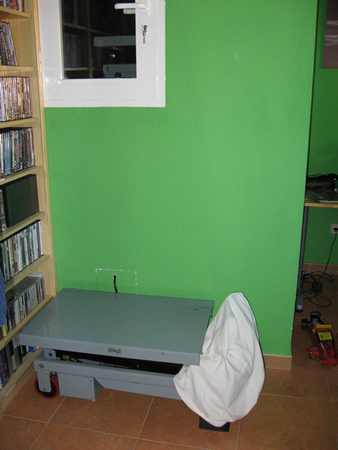
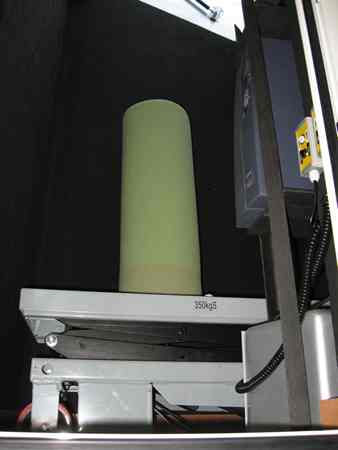
During 2008 summer holidays, I built the control box full of switches. You can see it here on the making (left) and already installed (right):
Now I needed to buy a scope that would fit in more or less comfortably. This was a real issue, as my window clearance space would get significantly reduced because of roof angle! I had to find the biggest scope I could fit in with many accesories on it, and that was a Meade 10" on a LX200 mount. I asked for some measures in www.cloudynights.com forums, and I had them answered. What a gift to have such a help community online! On March 2010 I bought my scope from a retailer in Germany for a very competitive price, so low that I have never seen it again! I think it was around 3400€ shipping included. On 15th March 2010, very nervous indeed, I unpacked my first ever "serious" telescope. I was more excited than a baby with a new dummie (and also trembling against shipping damage). The telescope arrived safely home, and it was quite a surprise for me that it was a pretty&educated woman (and not a fat&ugly man) that unloaded the heavy load from the UPS truck... Sorry I don't have a picture of the pretty&educated shipping agent that delivered the scope of my dreams:
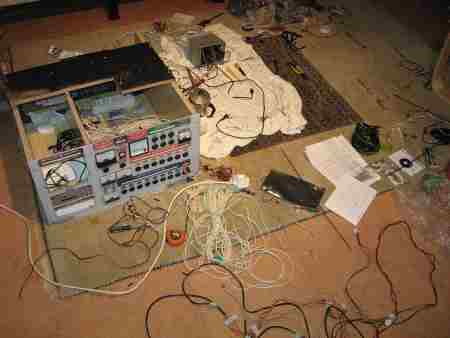
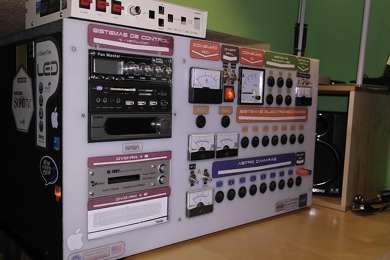
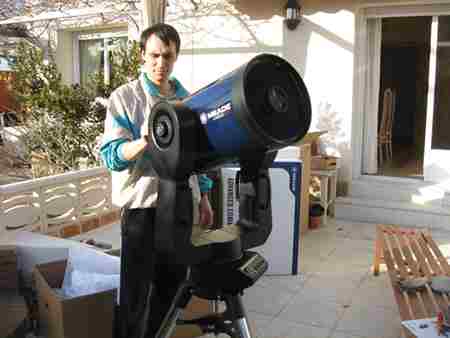
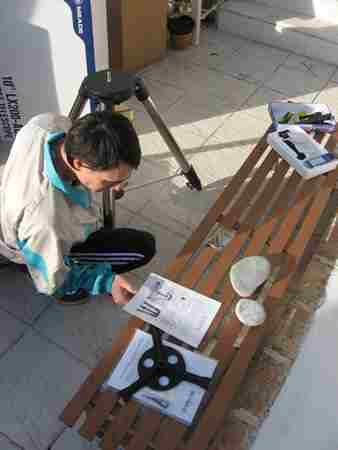
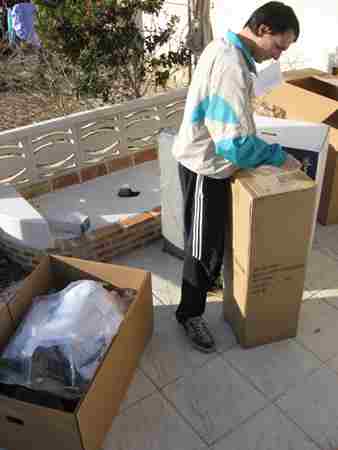
Now I had to buy all the accesories, whose cost surpassed the cost of scope itself. This has been the most time-consumming thing due to the aforementioned space-restriction issues within minimalist observatory. Now you see it below with some cameras which proved not good enough in sensitivity terms in ulterior testings for the task at hand (high resolution planetary and lunar work). Focuser is a VSI 3" Toadloader that you can see along a Silder 2 and filterwheel. First rate products. Hats off and my best wishes for Paul V. Slyke after the fire that destroyed his business in 2013. I hope he can get over the blow and find the joy of the Lord over the ruins.
MARCA 2
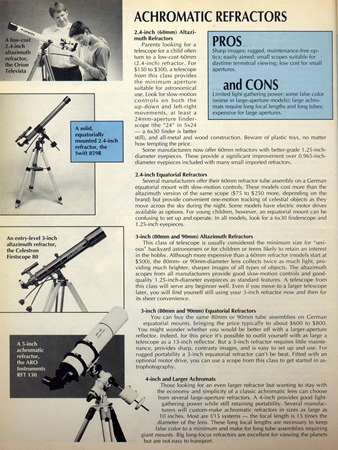
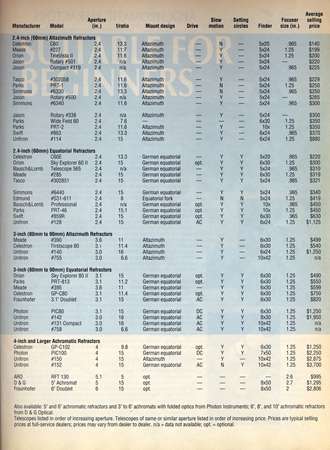
FACILITIES
OBSERVATORY + HARDWARE




